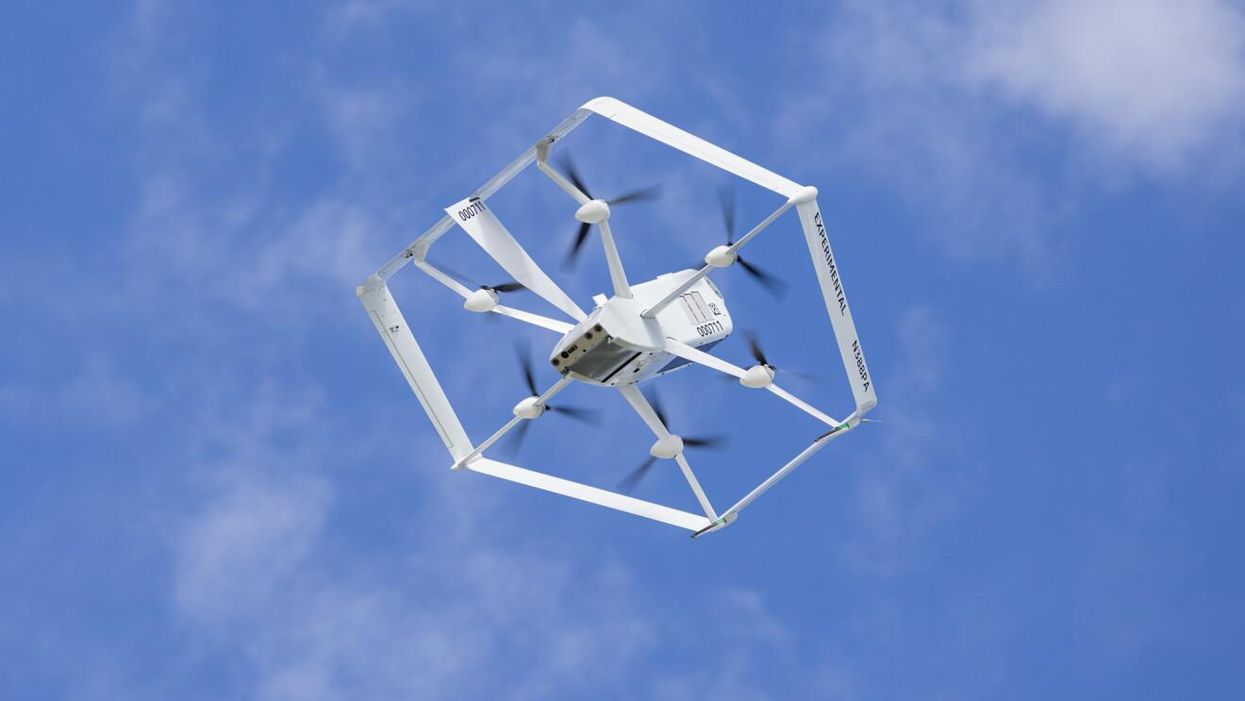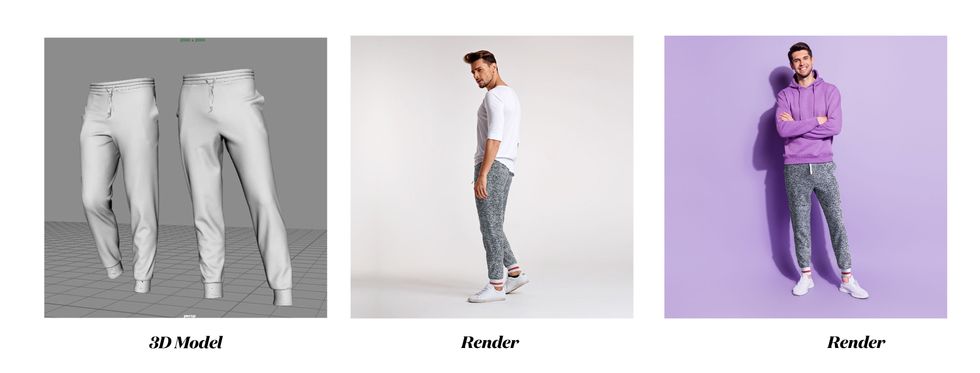Operations
14 June 2022
Amazon Prime Air moves into launch sequence
The drone delivery service is debuting in Lockeford, California, later this year.

An Amazon Prime Air drone. (Courtesy photo)
The drone delivery service is debuting in Lockeford, California, later this year.

An Amazon Prime Air drone. (Courtesy photo)
Prime Air has its first landing spot.
Amazon’s drone delivery service is planning to start making deliveries in Lockeford, California, later this year, marking the first customer deliveries for the program.
Residents will be able to sign up for a free drone delivery service, and select from Prime Air items on Amazon. The drone will arrive at a backyard, hover at a “safe height,” and then release a package.
The company said it is working with the Federal Aviation Administration (FAA) and local officials on obtaining permission for the service.
Amazon’s announcement comes amid a flurry of activity in the ecommerce drone delivery space. In recent weeks, Walmart announced plans to expand its drone service to 34 sites in six states. Meanwhile, Alphabet’s Wing service is delivering Walgreens items in four suburbs of Dallas. Unilever has a partnership with Flytrex to deliver ice cream by drone this summer in North Carolina and Texas, too.
Amazon planted the earliest flag for drone delivery in 2013, when then-CEO Jeff Bezos famously appeared on 60 Minutes to make a surprise announcement about the Prime Air program’s ambitions. But the company has since struggled to get the drone service off the ground amid delays and crashes.
With its launch now, Amazon is looking to demonstrate that it is best positioned.
With the announcement of Prime Air’s debut in Lockeford, Amazon offered a glimpse at its development through the years, including a slideshow of some of the more than two dozen prototypes it has developed that nodded to the many iterations.
It also provided a look at how it plans to stand out. Amazon said its technology is designed to automatically “sense-and-avoid” potential hazards. This is distinct from drone delivery that requires an observer to visually observe a route. From the description:
We designed our sense-and-avoid system for two main scenarios: to be safe when in transit, and to be safe when approaching the ground. When flying to the delivery location, the drones need to be able to identify static and moving obstacles. Our algorithms use a diverse suite of technologies for object detection. Using this system, our drone can identify a static object in its path, like a chimney. It can also detect moving objects on the horizon, like other aircraft, even when it’s hard for people to see them. If obstacles are identified, our drone will automatically change course to safely avoid them. As our drone descends to deliver the package into a customer’s backyard, the drone ensures that there’s a small area around the delivery location that’s clear of any people, animals, or other obstacles.
The program will need to be cleared for takeoff by regulators, and Amazon said it will work with federal and and local officials. In 2020, Amazon received a Federal Aviation Administration air carrier certificate for Prime Air.
Along with a leadership role into the future of airborne, autonomous technology, the prize of a successful drone delivery system is the ability to provide the fast (read: less than one hour) delivery that customers want, while doing so without sending human delivery drivers.
Going first on a new technology can bring the spotlight that’s sought by those who want to be seen as innovators, but those bright lights can get hotter if the results don't come. Meanwhile, when others make their own moves, it can appear that they've pulled into the lead.
Famously averse to acknowledging competitors, Amazon tries to be impervious to this. It is known for giving technologies time to develop. It has led to plenty of success that put it in the driver's seat of US ecommerce. But some developments didn’t ever see the light, such as the company’s ill-fated Fire Phone, which failed on launch. Others, like the company’s grocery business, have gone through a series of pivots as the company seeks to find a breakthrough.
Over nearly a decade, the drone program has had a unique place in this pantheon. The 60 Minutes appearance instantly brought it into the public consciousness. Simultaneously, it has yet to be used by the public to allow consumers to deliver a verdict.
The stakes for a potential launch suddenly seem higher now. Amazon is facing pressure over rising delivery driver crashes and labor unions in its logistics facilities, who were successful in organizing a fulfillment center in New York. It is also seeking to get its consumer business back to growth after reporting a quarterly loss and admitting it overbuilt logistics facilities. Meanwhile, the CEO of its consumer business is departing. As underscored by its own drone expansion, Walmart is rolling out big ecommerce upgrades with the kind of organizational foresight and technology combination that’s typically seen with Amazon. Perhaps those are leading the company to act more quickly. Stories from Bloomberg and Business Insider earlier this year depicted a program that was struggling to get off the ground. Monday’s announcement, however, is a sign that it is closer to the light of day than the public thought.
Whether it is successful in a community remains to be seen. Amazon said residents will help in offering feedback. The company said it will also be "creating new jobs, building partnerships with local organizations and helping reduce carbon emissions."
Though it didn't provide details on specific local initiatives , it's clear the groundwork is being laid. In our recent roundup of the drone delivery launches, we concluded the piece by writing of Amazon’s drone delivery ambitions, “Down the road, there may be another big unveiling still to come.”
With the stage set in Lockeford, it looks like that could arrive before the year is out.
Amazon partnered with Hexa to provide access to a platform that creates lifelike digital images.
A 3D rendering of a toaster from Hexa and Amazon. (Courtesy photo)
Amazon sellers will be able to offer a variety of 3D visualizations on product pages through a new set of immersive tools that are debuting on Tuesday.
Through an expanded partnership with Hexa, Amazon is providing access to a workflow that allows sellers to create 3D assets and display the following:
Selllers don't need prior experience with 3D or virtual reality to use the system, according to Hexa. Amazon selling partners can upload their Amazon Standard Identification Number (ASIN) into Hexa’s content management system. Then, the system will automatically convert an image into a 3D model with AR compatibility. Amazon can then animate the images with 360-degree viewing and augmented reality, which renders digital imagery over a physical space.
Hexa’s platform uses AI to create digital twins of physical objects, including consumer goods. Over the last 24 months, Hexa worked alongside the spatial computing team at Amazon Web Services (AWS) and the imaging team at Amazon.com to build the infrastructure that provides 3D assets for the thousands of sellers that work with Amazon.
“Working with Amazon has opened up a whole new distribution channel for our partners,” said Gavin Goodvach, Hexa’s Vice President of Partnerships.
Hexa’s platform is designed to create lifelike renderings that can explored in 3D, or overlaid into photos of the physical world. It allows assets from any category to be created, ranging from furniture to jewelry to apparel.

The result is a system that allows sellers to provide a new level of personalization, said Hexa CEO Yehiel Atias. Consumers will have new opportunity see a product in a space, or what it looks like on their person.
Additionally, merchants can leverage these tools to optimize the entire funnel of a purchase. Advanced imagery allows more people to view and engage with a product during the initial shopping experience. Following the purchase, consumers who have gotten a better look at a product from all angles will be more likely to have confidence that the product matches their needs. In turn, this can reduce return rates.
While Amazon has previously introduced virtual try-on and augmented reality tools, this partnership aims to expand these capabilities beyond the name brands that often have 1P relationships with Amazon. Third-party sellers are an increasingly formidable segment of Amazon’s business, as they account for 60% of sales on the marketplace. Now, these sellers are being equipped with tools that enhance the shopping experience for everyone.
A video displaying the new capabilities is below. Amazon sellers can learn more about the platform here.
Hexa & Amazon - 3D Production Powerhousewww.youtube.com